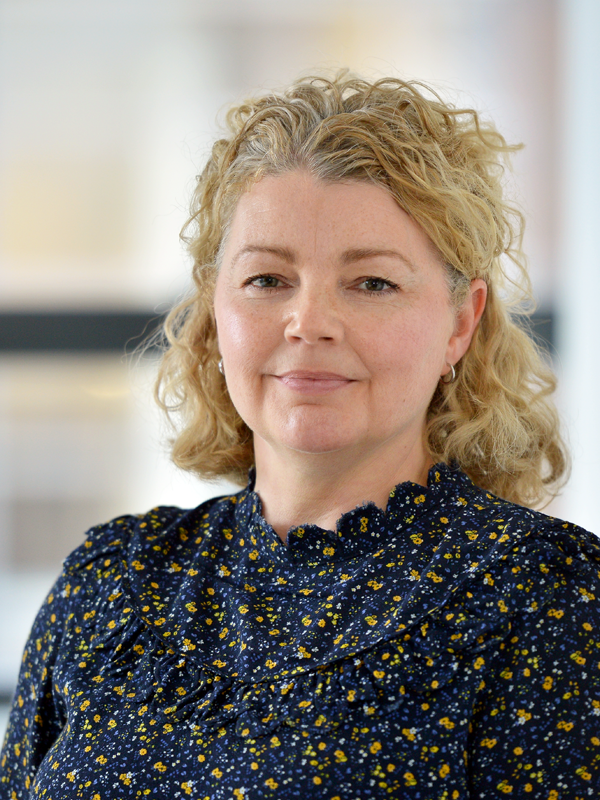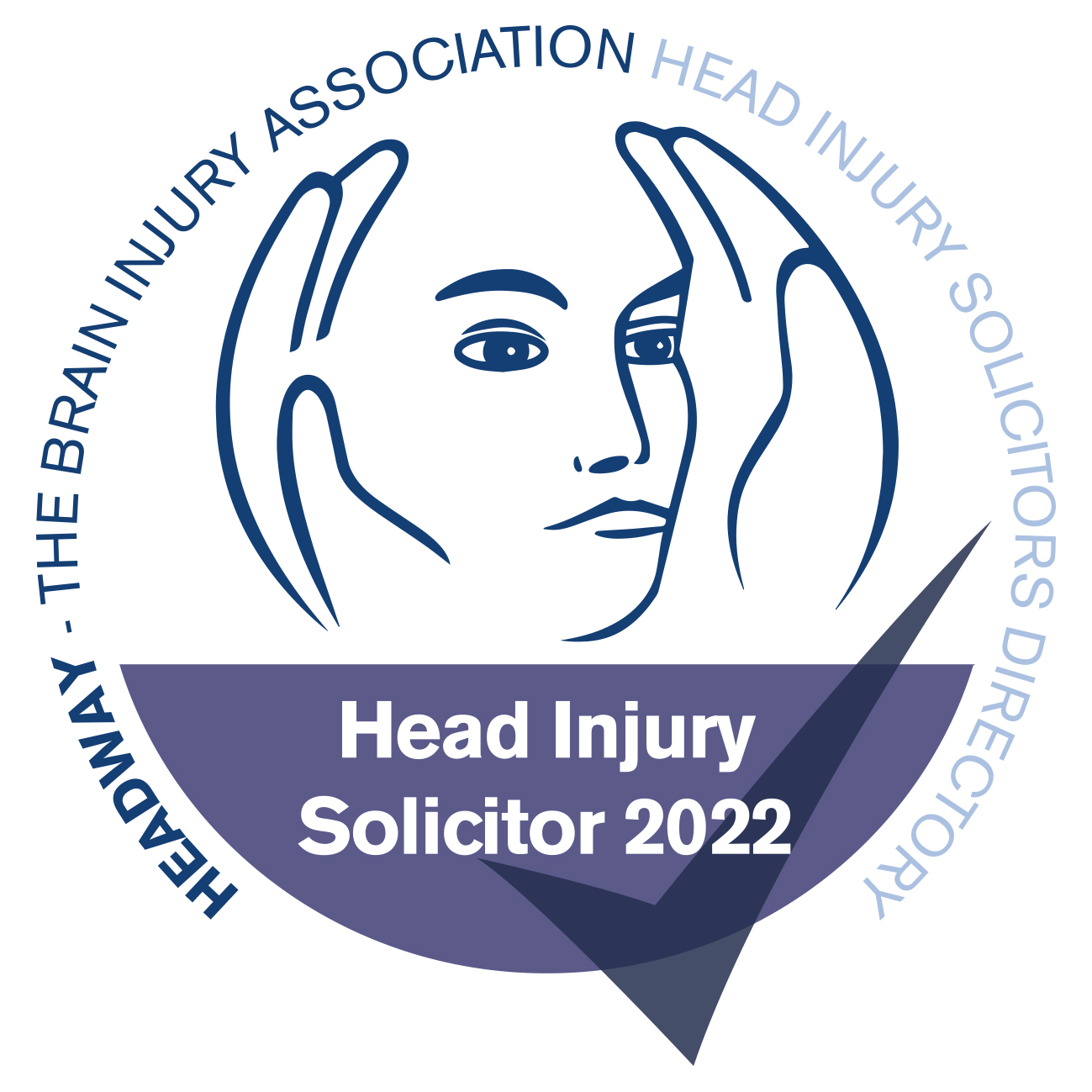Spinal Cord Injury Claims
Spinal cord injuries caused by medical negligence are a serious issue that could make you eligible for financial compensation. From back injury to paralysis, Potter Rees Dolan covers all forms of spinal injury claims, and can help you get the compensation you deserve.
If you suffered a spinal cord injury due to malpractice or negligence, then our specialist spinal cord injury lawyers are here to fight for the compensation you deserve.
To make a spinal cord injury claim, call us today on 0800 027 2557 for confidential and sensitive advice. You can also request a call back at a time that suits you.
Making a spinal cord injury claim
Potter Rees Dolan is one of the UK’s leading spinal injury cord compensation specialists, and are here to offer tailored legal support at every stage of the claims process.
- We will discuss the circumstances of how you came to be injured in detail and help you understand whether you have a case or not. If we agree that you do, we will help you gather all of the necessary evidence to build a strong case and give you the best chance of recovering the right amount of compensation.
- We will obtain your medical records and go through them with you in depth, before instructing independent experts to provide advice on whether you or your family member has received substandard treatment.
- Once we have ascertained that you have been a victim of clinical negligence, we will initiate court proceedings. We will progress the claim as quickly as possible, while always exploring opportunities to adequately settle the case early.
- Where possible, we also work towards obtaining early interim awards. For spinal cord injuries, interim payments can make a real difference, allowing our client to put care and therapeutic support in place as soon as possible. We will also aid you in purchasing a wheelchair-accessible home and appropriate enabling equipment at the earliest opportunity.
Why choose Potter Rees Dolan for your spinal cord injury claim?
Potter Rees Dolan is one of the leading clinical negligence solicitors in the UK and has represented many individuals with claims for injuries just like yours. From the very start, you will be represented by expert solicitors who will fight for your best interests every step of the way.
Our clinical negligence team is featured in the prestigious Legal 500 and Chambers guides and is led by Helen Dolan, Lesley Herbertson and Gill Edwards, all of whom have a keen understanding of the claims process and spinal cord injuries.
Boasting more than 60 years of combined experience in serious injury law and comprehensive medical insight, the team has an unwavering dedication to helping families recover the compensation they deserve. Our clients regularly tell us that it is the empathy and care with which we act that sets us apart. We offer regular contact with victims and their families to ensure their wellbeing comes first.
Our team knows what it takes to achieve a successful claim, and we’re here to make your voice heard. To make the strongest possible claim for compensation for your spinal cord injury, inquire with Potter Rees Dolan today.
Do I have a claim for my spinal cord injury?
Spinal cord injuries have a significant impact on the welfare of those who develop them. From partial immobility to complete loss of movement, the effects can be life-changing for victims and their families.
If your situation is similar to the above, you may be seeking financial assistance for medical costs and loss of work, as well as medical trauma. A successful claim can offer you the chance to pay for care and rehabilitation, contribute to any necessary equipment required, and also go a long way to helping you adapt or purchase a more accessible home.
If you’d like to see real-life accounts of successful claims, read through our case study where an undiagnosed spinal condition left a man severely disabled, as well as a misdiagnosis that led to a woman’s paralysis. In these cases, we successfully won over £1 million and above £2 million for each client, respectively.
How can medical negligence lead to a spinal cord injury?
Even the best medical professionals can make mistakes. Sometimes these errors could have been avoided, and therefore may count as negligence. Some examples of negligence include:
- Complications during spinal surgery that are not well managed
- Mistakes during spinal surgery, such as severing the spinal cord
- Failing to diagnose fractures of the neck and back in a timely fashion
- Mishandling of patients with actual or potential spinal injuries
- Misdiagnosis or delayed treatment
How much does a spinal cord injury claim cost? Will I be able to afford it?
Most clinical negligence cases are funded on the basis of a “no win, no fee” arrangement, otherwise known as a Conditional Fee Agreement. We can investigate your potential claim, and you will not have to pay us a penny if your case is not successful. We will explain how all this works during our very first meeting.
You may already have a legal expense insurance policy; if this is the case, we will always start by investigating whether you can use this policy before we consider whether a Conditional Fee Agreement would be more appropriate.
Contact us today
Our team is here for you and ready to help you make a spinal cord injury claim. Give us a call on 0800 027 2557 to start your enquiry.
To request a call back, visit our dedicated contact page. If there is someone specific at the firm you would like to speak to, visit their profile on our people page.
FAQs
What counts as a spinal cord injury?
A spinal cord injury occurs when a portion of the spinal cord or the surrounding nerves at the base of the spine have been damaged. Generally, the closer the spinal cord injury is to the brain, the more severe the damage and the more parts of the body will be affected.
Injuries to the spinal cord can severely impact many aspects of a person’s life, with paralysis, incontinence and loss of the upper body and arm use among the potential consequences. The extent of the disability will be determined by the level of the spinal cord injury and whether it is complete or incomplete.
How long can I wait until I make a spinal cord injury claim?
For spinal injury you can make a claim within three years from the date you received the injury.
For children, a claim can be made up until their 21st birthday. However, after the child reaches 18, they will have to make a claim on their own behalf.
How do a healthy spine and spinal cord function?
Known as the vertebral column or spinal column, the spine is a fundamental part of the human body that houses and protects the spinal cord. The spine is comprised of protective bones called vertebrae, which start at the skull and make their way down to the lower back.
The vertebral column is divided into five distinct regions:
- Cervical spine - there are seven vertebrae in this portion of the spine. They are located in the neck and allow for movement of the skull forwards and backwards.
- Thoracic spine - the area in parallel with the thorax (the area between the neck and the abdomen). The thoracic spine has twelve vertebrae in total.
- Lumbar spine - this part of the spine is located in the lower back and contains five vertebrae. Some of the largest non-fused spinal discs are located in this section of the vertebral column. It is also worth noting that the spinal cord does not extend past this point of the spinal column.
- Sacral spine - located in the lower part of the back, these five vertebrae are typically fused together to form a solid structure.
- Coccyx - at the bottom of the spinal column is the coccyx, a part of the body commonly referred to as the tailbone. It is made up of four vertebrae.
Humans rely on the spinal column for core internal support. It plays a key role when we stand, bend and turn, all the while protecting the spinal cord from serious injury.
Built into the spinal column is the spinal cord, a complex series of nerves that start at the bottom of the brain and run down the vertebral column, all the way to the backbone. The spinal cord, along with the brain, is a significant part of the central nervous system.
The spinal cord works as part of the central nervous system, and has an important role to play in the following areas:
- Walking - this activity is coordinated by the brain and the spinal cord. Groups of muscles in the legs have to coordinate to extend and contract repeatedly, with neurons called central pattern generators sending signals to the leg muscles to make that happen.
- Electrical communication - electrical signals are sent up and down the spinal cord, facilitating communication between the brain and the rest of the body.
- Reflexes - involuntary movements that are governed by external stimuli and the brain. For instance, the instinctive reaction to touching something hot is to withdraw the part of the body affected immediately.
How do spinal cord injuries impact day-to-day living?
Suffering a spinal cord injury is life-changing for everyone concerned, and the prospect of full recovery for the victim is often limited at best. For families, watching a loved one suffer and struggle with the consequences of a serious injury places on them enormous stress and daily challenges.
When planning for life after a spinal cord injury, you may have to think about:
- Carers to assist with day-to-day tasks
- Specialist equipment to assist with bodily functions such as breathing, urinating or defecating
- Rehabilitation to retrain your body to perform tasks such as walking or holding an object
- Making alterations to your home to improve access and comfort
- Therapy to come to terms with the nature of the injuries sustained
How do injuries to different parts of the spine affect a person?
Spinal cord injuries are categorised by where the injury has been sustained, because the spinal column can be broken down into distinct areas, with each portion housing specific functions.
Sustaining an injury to a higher part of the spine generally results in more serious consequences for the victim.
High-cervical nerves (Upper neck, C1 - C4)
- Severe paralysis is often the result, with hands, legs and torso all paralysed
- The victim may not be able to breathe independently
- Assistance may be required with routine daily activities, such as eating, dressing and getting in and out of bed
Low-cervical nerves (Lower neck C5-C8)
- Responsible for nerves controlling arms and hands
- Typically, people with this type of injury may be able to breathe independently and speak uninhibited
- The victim is likely to be paralysed in the legs and have limited control over their arms
- Many people with this type of spinal injury will have little or no control of their bowels and bladder
- A moderate level of personal care is required for people with this type of injury
Thoracic nerves (Higher, T1 - T5)
- Damage sustained here affects muscles, the upper chest, the mid-back and abdominal muscles
- Injuries usually affect the legs, resulting in paraplegia - paralysis or loss of feeling in the legs or lower body
- The victim can use braces or crutches to walk, as arm and hand function is typically unaffected
- The patient is usually capable of using a wheelchair
Thoracic nerves (Lower, T6 - T12)
- Damage to this area results in loss of function and feeling in the abdominal and back muscles, depending on the nature of the injury sustained
- Upper body movement is usually unaffected
- Many people with this type of spinal injury will have little or no control of their bowels and bladder
- Injury to this area of the spinal cord can result in lower limb paraplegia
Lumbar nerves (L1 - L5)
- Usually leads to a loss of function in the hips and legs
- Injury results in partial or complete loss of control of the bowel and bladder, but the patient can use equipment to manage their condition without care
- A wheelchair may be needed if there is not enough strength in the legs, otherwise leg braces may be an option
Sacral nerves (S1 - S5)
- Results in some loss of function in the hips and legs
- Many people with this type of spinal injury will have little or no control of their bowels and bladder
- In comparison to damage sustained in other areas of the spinal cord, people with an injury to this area are more likely to be able to walk
Useful Information
Cauda Equina Syndrome (CES)
This is a particularly serious type of nerve root problem in the back which is very rare. It occurs when there is pressure on the nerves at the very bottom of the spinal cord, preventing the nerves from working properly. For more information on CES click here.
Chronic Pain Syndrome
This is a condition, also known as complex regional pain syndrome, in which a person suffers from severe ongoing pain.
The cause of Chronic Pain Syndrome (CPS) is unknown but is thought to be the result of the body reacting abnormally to an injury. Some even thought the symptoms of CPS were psychosomatic or 'in the mind' but research has disproved this.
Other theories suggest that CPS is the result of a widespread abnormal response to an injury that causes several of the body's systems to malfunction including; the central nervous system, the immune system and the blood vessels.
Each of these systems are responsible for many body functions that are often affected in people with CPS.
The pain is usually confined to one limb but can sometimes spread to other parts of the body where it can become so sensitive that just a slight touch or bump can provoke intense pain.
Many cases of Chronic Pain Syndrome improve over time but many cases never go away and the affected person will experience pain for many years.
The pain experienced by sufferers is usually a burning, stabbing or stinging pain or a tingling sensation and numbness.
The pain may last periods of a few days or weeks in flare-ups where the discomfort gets worse. Stress can be a trigger of this which is why relaxation techniques are often used when treating CPS.
Not only are the physical symptoms an issue with Chronic Pain Syndrome but the emotional strain of living with CPS can sometimes lead to psychological problems such as depression and anxiety.
There is no known cure for Chronic Pain Syndrome but sufferers are often given a combination of physical treatment, medication and psychological support in order to manage the symptoms.
Read about a client of PotterReesDolan who suffered with Chronic Pain Syndrome here.
Disc Protrusion
This protrusion, or bulge, can occur anywhere along the length of the spinal column from the neck (cervical spine) to the lower back (lumbar spine).
Doctors pay close attention to the patient's symptoms before more focussed procedures because sometimes the pain may occur in one part of the body but the actual cause lies in a different part of the spine.
If the pain is in the lower back (lumbar spine), leg or the groin, this could be irritation on the disc itself or irritation of the nerves next to the spine.
When the slipped disc presses on a nerve in the lumbar spine causing pain to spread below the knee (known as Sciatica), this can cause numbness or pins and needles or even a difficulty in lifting the toes and the foot.
The causes of disc protrusion or a slipped disc are when the outer case of the disc splits leaving the gel inside bulging out of the disc. This can then then put pressure on the spinal cord or a single nerve root, as explained above.
Age can sometimes play a part as the spinal discs start to lose their water content which makes them more flexible.
Recovery from a slipped disc can take around four to six weeks with treatment usually including a combination of physical therapy and medication.
In many cases, a slipped disc will eventually shrink back away from the nerve and the pain will ease as the disc stops pressing on the nerve.
Laminectomy
This is one of the most common back surgeries where a surgeon removes the rear portion of one or more spinal bones (vertebrae).
Ligaments and bones that are pressing on the nerves may be removed at the same time during surgery.
People with arthritis in their spine can sometimes develop bony overgrowths within the spinal canal which can cause the pressure.
As with any form of surgery, there can be complications during a laminectomy including:
- Bleeding,
- Infection blood clots,
- Nerve injury
Orthopaedic injuries can also occur during surgery in which case a clinical negligence claim may be brought against the hospital.
Most people who undergo a laminectomy see an improvement in their symptoms but, as the spine ages over time, the benefit may lessen.
Microdiscectomy
This is a form of spinal surgery to decompress the spine using a microscope to view the spine and the lumbar disc.
A small portion of the bone over the nerve root is removed to relieve neural impingement and to provide the nerve with more room to heal.
Compression of the spine can cause substantial leg pain and a microdiscectomy is usually performed for a herniated lumbar disc which is said to be more effective for treating leg pain than lower back pain.
The success rate of a microdiscectomy is approximately 90-95% with 5-10% of patients developing a recurrent disc herniation at some point in the future.
In any spinal surgery, there is the risk of a cerebrospinal fluid leak which occurs in 1-2% of these procedures. This means the patient will have to lay horizontally for one or two days to allow the leak to seal. Other complications can include; nerve root damage, bleeding or infection.
Pressure Sores (Ulcers)
These occur when the skin is placed under pressure and can range in severity; from discoloured skin to open wounds which expose bone or muscle.
Pressure sores can develop when a large amount of pressure is applied over a short period of time or a small amount of pressure over a longer period of time. They can form, for example, when recovering from an operation when confined to lying in a bed for long periods of time.
If the patient's position is changed regularly, then pressure sores can be prevented as blood flow can be undisturbed. A care team would develop a repositioning timetable to set out how often someone needs to be moved in order to prevent or reduce the impact of pressure sores.
Here you can read about a client who developed pressure sores after suffering a spinal cord injury when he was left in bed too long and rotation procedures were not followed.
Even when pressure sores have been cared for properly, complications can arise with grade 3 or grade 4 pressure sores potentially life threatening. An elderly client of PotterReesDolan sadly passed away after developing pressure sores and subsequently pneumonia.
Pressure sores can also be an issue for people in wheelchairs as they can often be provided with unsatisfactory equipment, meaning sores can develop due to the prolonged pressure on the skin.
Spinal Cord Abscess
Spinal cord abscess is a rare condition capable of causing permanent damage to the spinal cord.
Abscesses are caused when injured tissue becomes infected. The body’s immune system sends white blood cells to help fight off the infection. They begin to fill the damaged tissue, causing pus to build up. Pus is made up of the dying tissue, immune cells, dead cells, and bacteria.
The cause of Spinal cord abscess is generally due to the introduction of bacteria into the spinal cord. Once inside the body, it is able to find a place to live and grow. The pressure of the abscess on the spinal cord will sometimes cause neurological problems, such as lower-body paralysis and loss of sensation below the area of the abscess.
Doctors will try to find the presence of an infection by testing body fluids. They may also look at an image of the abscess. Once the diagnosis is confirmed, they will have to either drain or remove the abscess.
Patients will generally receive antibiotics to take after they leave to avoid getting an infection. Since antibiotics have come into common medical use, Spinal cord abscess has become extremely rare. In fact, fewer than 100 cases have been reported in modern medical history
Quick recognition of spinal cord abscess is important in effectively treatment. Left alone, the abscess could burst, letting millions of bacteria spread throughout the body. Once the problem is identified, treatment for spinal cord abscescan include:
- Laminectomy
The patient is put under anesthesia before the surgery. Surgeons open the abscess carefully and drain all the fluid. They then rinse sanitary saline fluid through the abscess to assure all bacteria are gone.
- Intraoperative Pus Collection.
During this procedure, fluid is collected from the abscess for testing.
- Closure of Dermal Sinus
Doctors who find a dermal sinus will typically close the gap. The hope is there will be one less place for bacteria to gather and form an infection.
The earlier a spinal cord abscess is treated, the more positive the outlook. Patients who have a leaking abscess are unleashing bacteria into the bloodstream. They could end up with abscesses on the brain or liver.
Patients who get treatment after the start of neurological symptoms generally will need a form of rehabilitation. The hope is that over time the neurological symptoms will get better or disappear.
Spinal Cord Compression
This happens when there is pressure on the spinal cord. This may be caused by cancer growing in or spreading into the bones of the spine, which occurs in 5% of people with advanced cancer.
Spinal cord compression may also occur when the spinal cord becomes injured through a trauma such as a car collision, or when the bones become weak (osteoporosis) or infection.
The pressure on the spinal cord stops the nerves working normally which causes a variety of symptoms including; pain or tenderness in the back which may be worse when coughing or sneezing, numbness or weakness in the legs and changes in sensation in parts of the body e.g. pins and needles.
Symptoms vary from person to person depending on the location of the compression on the spine but they may also include bowel functionality problems, erectile problems in men and a band of pain down your arm or leg.
Recovery of spinal cord compression also varies between patients; from complete recovery to complete paralysis.
Those diagnosed with a spinal cord compression would be referred to a neurosurgeon. Patients with regional spinal cord lesions would have an emergency decompression of the spine.
The patient, however, would have to have surgery if the spinal nerves were impinged or if there was neurological deterioration.
Long term treatment would include rehabilitation including physiotherapy and occupational therapy.
Spinal epidural haematoma - Over Anti-coagulation
This injury can be caused by a number of factors including childbirth or surgery where bleeding into the epidural space in the spine can occur.
However, here we are focusing on epidural haematoma caused by over anti-coagulation.
In the spine, the epidural space contains loose fatty tissue and a network of large, thin-walled veins. This means that bleeding is likely to be venous.
Anatomical abnormalities and bleeding disorders make these lesions more likely. They may cause pressure on the spinal cord or cauda equina. The diagnosis may be made on clinical appearance and time course of symptoms. It usually requires MRI scanning to confirm. The treatment is surgical decompression.
However, when epidural haematoma is caused by over anti-coagulation, the sufferer will be on anticoagulant medication which prevents the blood from clotting.
Over anti-coagulation is when the patient has taken too many anticoagulant drugs which can result in bleeding or bruising easily. This can then affect the epidural space and can lead to haematoma and even paraplegia.
Read about a case of Helen Dolan's which settled for a lump sum of £2.3 million after an elderly woman suffered an epidural haematoma due to over anti-coagulation.
Spondylitis
This is an inflammation of the vertebra and is a form of chronic arthritis which affects the bone, muscles and ligaments.
The spine is made up of 24 individual vertebrae which are separated by soft pads that act as shock absorber which allow the spine to bend. The vertebrae are also held together by ligaments and spinal muscles, giving the back its strength.
The symptoms of spondylitis can vary between each patient but generally people suffer from back pain and stiffness, usually taking a long time to develop, and fatigue if let untreated. The back pain in sufferers usually gets worse with rest and can often wake them up during the night.
This condition can be severe, with one in 10 people at risk of a long term disability.
The causes of spondylitis are not fully understood but a particular gene (HLA-B27) has been identified that is closely linked to the condition. However, if you have the gene then you may not necessarily have the condition.
In order to diagnose spondylitis, you may have blood tests to measure how much swelling you have in your body.
Further tests may include x-rays to see if there is any damage to the joints in your spine.
Unfortunately, there is no cure for spondylitis but there are treatments available to help ease the symptoms and slow the process of the spine stiffening, which include; physiotherapy, painkillers and other medicines.
As Spondylitis is such a complex condition, it can also lead to additional health problems; including Cauda Equina Syndrome.














